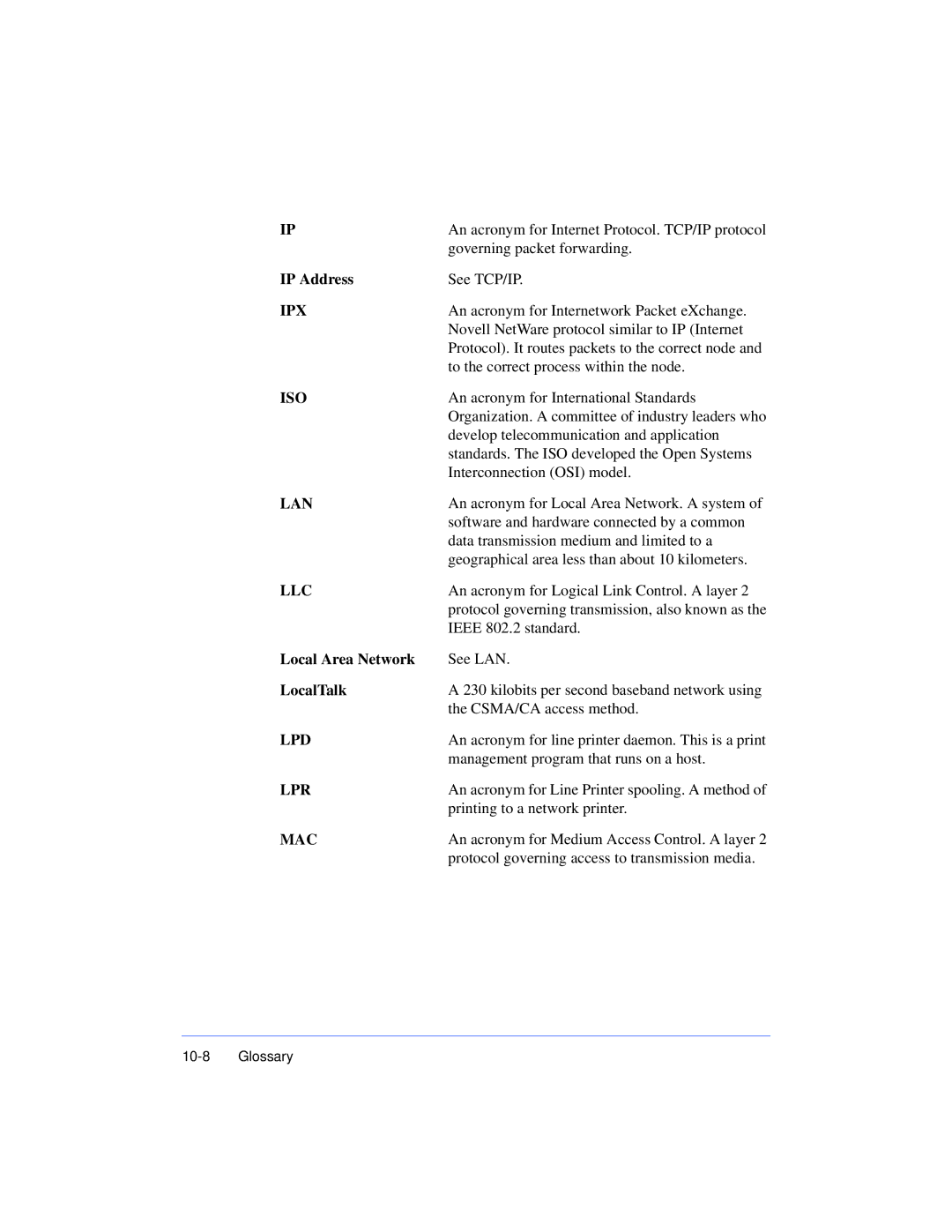IP | An acronym for Internet Protocol. TCP/IP protocol |
| governing packet forwarding. |
IP Address | See TCP/IP. |
IPX | An acronym for Internetwork Packet eXchange. |
| Novell NetWare protocol similar to IP (Internet |
| Protocol). It routes packets to the correct node and |
| to the correct process within the node. |
ISO | An acronym for International Standards |
| Organization. A committee of industry leaders who |
| develop telecommunication and application |
| standards. The ISO developed the Open Systems |
| Interconnection (OSI) model. |
LAN | An acronym for Local Area Network. A system of |
| software and hardware connected by a common |
| data transmission medium and limited to a |
| geographical area less than about 10 kilometers. |
LLC | An acronym for Logical Link Control. A layer 2 |
| protocol governing transmission, also known as the |
| IEEE 802.2 standard. |
Local Area Network | See LAN. |
LocalTalk | A 230 kilobits per second baseband network using |
| the CSMA/CA access method. |
LPD | An acronym for line printer daemon. This is a print |
| management program that runs on a host. |
LPR | An acronym for Line Printer spooling. A method of |
| printing to a network printer. |
MAC | An acronym for Medium Access Control. A layer 2 |
| protocol governing access to transmission media. |
